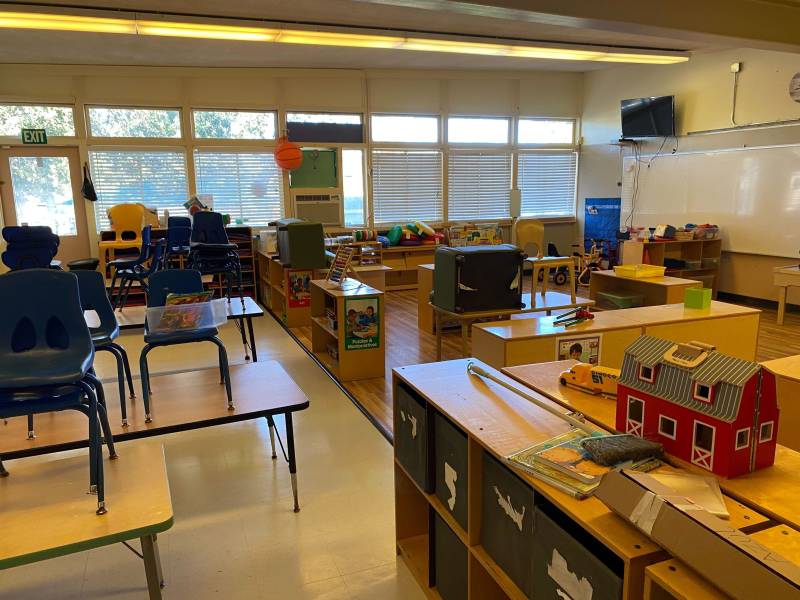A severe teacher shortage has forced dozens of preschools in California to shut down some of their classrooms since the start of the school year.
The funding for these subsidized classrooms is available, and plenty of children from lower-income families are waiting to enroll. But there aren’t enough teachers — a situation that could get worse as the state begins to pour billions of dollars into transitional kindergarten, threatening to destabilize the early education workforce.
“We have over 25 classrooms that we can put kids in, but we don’t have employees,” said Donna Sneeringer, chief strategy officer at the Child Care Resource Center, which serves children in Head Start programs in Los Angeles and San Bernardino counties. When she began comparing notes with other child care agencies in Southern California, the number grew to 100.
Her findings prompted a statewide survey of government-contracted early education programs last month. According to the survey, which had about a 20% response rate, there are a total of almost 1,300 unfilled teacher positions. That means, overall, these programs serving the state’s children from lower-income families could be missing 4,000 to 5,000 teachers, according to Christopher Maricle, executive director of Head Start California, which conducted the survey along with the advocacy group EveryChild California.
The staggering numbers didn’t surprise him.
Low wages were driving away early childhood educators, who are overwhelmingly women of color, long before the pandemic began. But the physical, mental and financial stress they endured during the public health crisis, and the recession, accelerated their Great Resignation. Some teachers moved to more affordable locations, while others chose early retirement or left for better-paying jobs in other industries.
Some are also shifting to public schools, where they stand to double their salaries as widening access to transitional kindergarten opens new job opportunities for them — and threatens to destabilize the already fragile child care industry.
“It’s the perfect, horrible storm,” said Maricle, who thinks the expansion of TK starting this school year in California exacerbated the staffing problem. “You’ve got inflation, you’ve got a rising minimum wage that makes it more attractive for people who are in Head Start to make similar wages at McDonald’s. Then there was the pandemic, which made it harder to enroll families, and the stress of doing the work really increased for the staff.
“All of those pressures together are just putting enormous stress on the system.”

